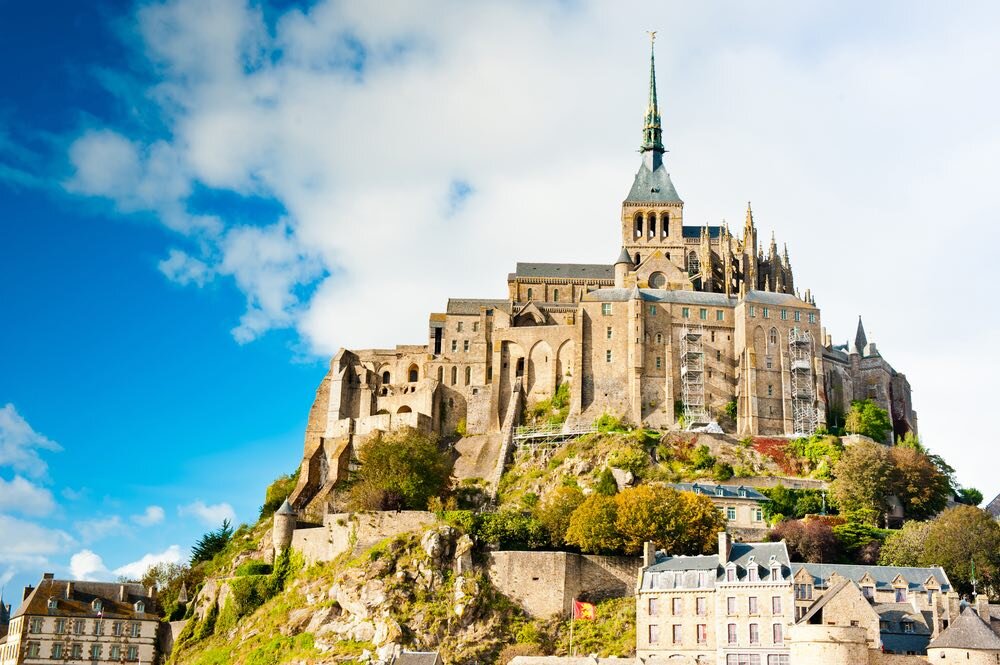Semi-guided tour in Provence
Provence your way
Price Per Person
Starting at 73,000
Category
Category
Explore the enchanting French Riviera by train — from Avignon, Nice, Arles, Marseille, Aix-en-Provence, Monaco, Cannes, Menton, Antibes, to Èze — all in one unforgettable journey. Stretching over 100 kilometers along the Mediterranean coast, the Riviera boasts a pleasant climate year-round and draws countless visitors seeking sunshine and seaside charm. Discover the hilltop villages of southern France, each with its own unique character and peaceful atmosphere. With crystal-clear streams and fresh mountain air, a riverside picnic or a stroll through fragrant lavender fields offers the perfect way to soak in the beauty of Provence’s countryside.

Train Ticket
- Eurail France Flexible Pass - 4 Days Within One Month
- Including seat reservation for the following routes :
- Paris - Avignon
- Avignon - Nice
- Nice - Paris

Hotel
- 2 nights in Avignon
- 3 nights in Nice
- 1 night in Paris
- All accommodations are in 4-star hotels with daily breakfast included.

Day Trip
- Provence Day Tour
- Paris Visite Pass|Zones 1–3, 1 Consecutive Day

Others
- Insurance & Add-on Services:
- Travel Accident Insurance: NT$10 million overseas travel accident coverage + NT$1 million medical reimbursement + NT$1 million emergency assistance (valid only for flights departing from Taiwan)
- Liability Insurance: NT$5 million accident coverage + NT$200,000 medical coverage (valid only for flights departing from Taiwan)
- Travel Inconvenience Insurance: Standard Chubb overseas travel inconvenience plan (covers flight delays, baggage delays, etc.); upgrade to Premium plan available at additional cost
- Europe Data Plan: Optional add-on available
Trip Rules
- Price:
- NTD 73,000 per person (based on two people traveling together)
- Upgrade to first-class train seat: additional NTD 2,000 per person
- Travel Period:
- Valid for departures in 2025
- Remarks:
- Hotel rates are subject to change during exhibition or peak seasons; final prices will be confirmed upon booking.
- In case of train maintenance or suspension, the itinerary may be adjusted accordingly. Please contact your travel consultant for details.
- Prices do not include passport and visa fees, train sleeper supplements, or city taxes.
Detailed Itinerary
Travel Tips for France
Day 1–2 | Paris → Avignon Train Journey : 3 hr 37 mins
Getting to Avignon is very convenient — the city has two train stations. Avignon Centre is closer to the old town, and as soon as you step out of the station, you’ll see the continuous stretch of ancient city walls. The other station, Avignon TGV, is located in the suburbs and serves high-speed trains. From Avignon TGV, you can transfer to a local train to Avignon Centre or take a bus directly into the city.
After arriving at Paris Airport, you can conveniently take a TGV high-speed train from the airport’s station straight to Avignon. The city, surrounded by 5 kilometers of medieval ramparts, is filled with historic buildings and a timeless atmosphere.
Avignon has a remarkable past — it was inscribed as a UNESCO World Heritage Site in 1995, and due to the power struggle between the Church and the monarchy, seven popes once resided here during what is known in history as the Avignon Papacy.
A visit to Avignon wouldn’t be complete without exploring the Palais des Papes (Papal Palace). Although the interior suffered great damage during the French Revolution — with many artworks and frescoes destroyed or looted — the magnificent Gothic structure itself remains impressively well preserved. Inside, some halls occasionally host contemporary art exhibitions. You can borrow a free audio guide (available in Chinese) to fully appreciate the intricate details of the largest Gothic palace in all of Europe.
Just in front of the Papal Palace lies the square that becomes the main stage for the Festival d’Avignon, one of the world’s largest performing arts festivals, founded in 1947. Every July, Avignon transforms into a vibrant city of art, welcoming tens of thousands of artists and visitors. The festival combines theater, dance, visual arts, and music, creating a lively and entertaining atmosphere. Street performers showcase their talents in the square, while actors dressed in flamboyant costumes hand out flyers and invite people to their shows — the energy, creativity, and passion of the Avignon Festival truly make it an unforgettable experience.


Short trip suggestion : Arles / Train 20 mins
Located in southern France, Arles is often called “Little Rome” because it is home to one of the best-preserved Roman amphitheaters in the world. The city is also known as the City of Van Gogh, as the artist spent his later years living and painting here.
Before being admitted to a sanatorium, Vincent van Gogh completed many of his greatest masterpieces in Arles, including Café Terrace at Night, Starry Night Over the Rhône, The Courtyard of the Hospital at Arles, and The Bedroom in Arles.
One of the city’s most famous landmarks, the Café de Van Gogh, also known as the “Café Terrace at Night,” was heavily damaged during wartime but later restored by locals according to Van Gogh’s painting. The settings depicted in Café Terrace at Night and The Café Terrace in the Evening correspond to the indoor and outdoor scenes of today’s Le Café Van Gogh in Arles.
Interestingly, Van Gogh deliberately altered the real colors of the café to express his emotions while painting, so the hues in the artwork differ from reality. If you take a nighttime stroll along the Rhône River under the stars, you might just glimpse the same view that inspired the genius artist back in 1888.
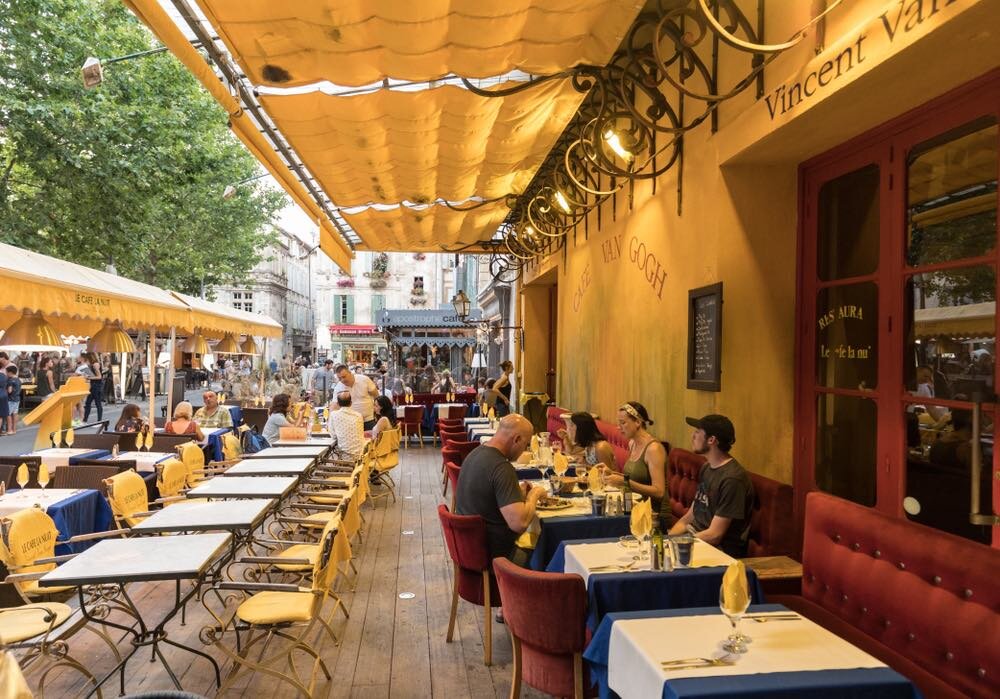

Short Trip Suggestion: Marseille / Train 1h15m
The air in Marseille carries the scent of the sea — fishing boats fill the bustling harbor, and on the distant hillside stands a magnificent church offering panoramic views of the entire city and its sparkling coastline.
With your France Rail Pass (included in the itinerary), you can enjoy a 15% discount on the Marseille City Pass, which provides free entry to 14 museums and unlimited use of public transportation — a great way to explore the city’s cultural and maritime charm.
You don’t have to travel all the way to Scandinavia to see breathtaking fjords — southern France has its own version! The Calanques of Marseille, stretching for nearly 20 kilometers between Marseille and Cassis, are dramatic limestone cliffs plunging into turquoise waters.
To explore the area, you can take a boat tour to admire the fjord-like inlets from the sea, or travel by bus from central Marseille to the end of the line, where you’ll find the entrance to Sugiton Calanque. A scenic trail leads to a panoramic viewpoint overlooking the glittering Mediterranean — a truly unforgettable sight.
The Calanques are perfect for swimming, hiking, and rock climbing. Formed by striking white limestone, these cliffs are a favorite destination for France’s top climbers. If you’re an adventure lover, this is the perfect place to test your skills while soaking up the natural beauty of Provence’s rugged coastline.
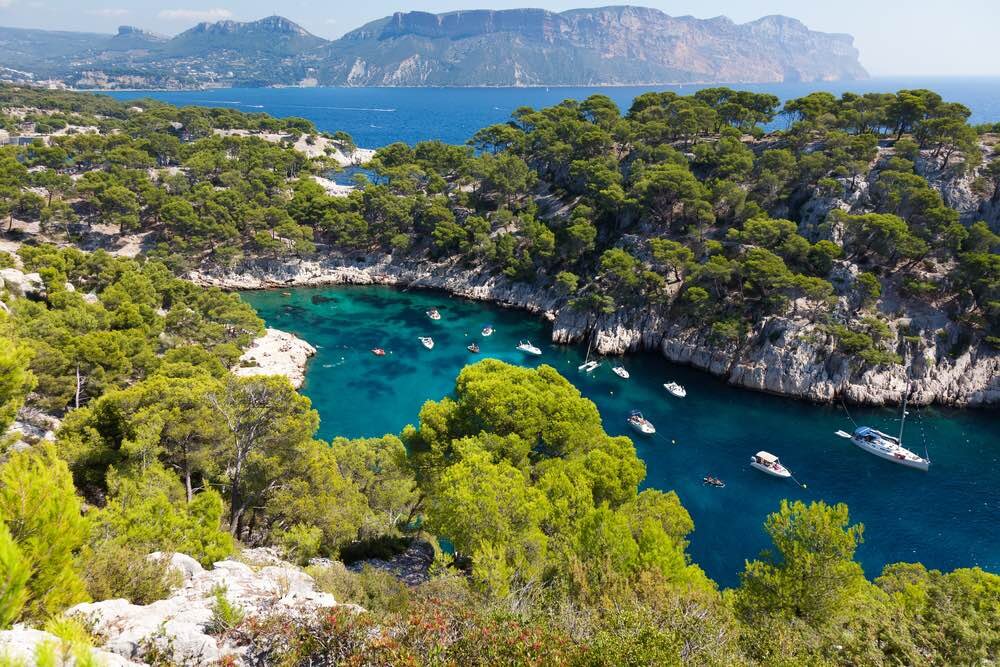
[Guided Tour] Full-Day Provence Route (Included in the itinerary)
Depart from Avignon for a full-day journey to experience the charm of the French countryside.
Begin your wine adventure in Châteauneuf-du-Pape, where you’ll enjoy panoramic views of the Rhône River from the town’s historic castle. During a wine tasting session in one of the local cellars (two wines included), discover the century-old heritage of this famous wine region. You can also browse traditional shops offering local wines and seasonal Provençal specialties.
Lunch time will be free for you to explore the town on your own.
Continue on to Roussillon, known as one of “The Most Beautiful Villages in France.” The village’s striking red and yellow ochre cliffs create a truly unique natural landscape.
Next, visit Ménerbes, the picturesque village that inspired British author Peter Mayle’s beloved memoir “A Year in Provence.”
You’ll also see the Pont Julien, an ancient Roman stone bridge built in 3 BC, which spans the Calavon River.
Finally, explore the hilltop village of Gordes, located in the Luberon region. Gordes is renowned for its dry-stone architecture — terraced houses, red-toned buildings, and a beautiful 16th-century Renaissance château, all blending harmoniously into the rocky landscape.
Note:
- The itinerary may vary depending on local conditions and weather.
- Duration: Approximately 10 hours
- Departure time: 9:00 AM
- Guided language: English
- Lunch not included
- Final details are subject to the information stated on your voucher.
For more optional tours, you may consider visits such as Roussillon (the Red Village), Gordes, or the Lavender Route, among others.

Day 3–4 | Avignon → Nice By train / Overnight in Nice (2 nights)
When you think of Provence, a few signature dishes from Nice probably come to mind — the colorful Ratatouille (yes, the same vegetable stew made famous by Ratatouille the movie), the refreshing Salade Niçoise (a mix of vegetables, eggs, and tuna), and the world-renowned Bouillabaisse, a rich Mediterranean fish soup that represents the very essence of Provençal cuisine.
Nice, the capital of the French Riviera, is one of the world’s most beloved seaside destinations. With its beautiful coastline, vibrant promenades, and sun-drenched beaches, it’s a paradise for travelers looking to enjoy the sea, sunshine, and a relaxed Mediterranean vibe. In summer, the shores come alive with swimmers and yachts, while the city’s mild climate makes it a delightful getaway year-round.
Once a favorite retreat for European aristocrats, Nice continues to charm visitors with its blend of elegance and accessibility. Compared to the luxury of nearby Cannes, Nice feels more down-to-earth — yet equally captivating. Come and experience the freedom, color, and warmth that define the spirit of the Côte d’Azur.
Highlights:
- Musée Matisse
- Musée Marc Chagall
- Promenade des Anglais
- Castle Hill (Colline du Château)
- Baie des Anges (Bay of Angels)
Local specialties: Niçoise salad and olive oil dishes — must-tries when in Nice!


Short trip suggestion: Menton Train 45 min
Nestled between the mountains and the sea, Menton sits gracefully on the border between France and Italy. Blessed with over 300 days of sunshine each year, this charming seaside town is known for its mild climate and picturesque setting — a true gem of the French Riviera.
Thanks to its warm weather, Menton is ideal for growing citrus fruits, especially lemons, which have become the town’s symbol. Every February, during the harvest season, Menton bursts into celebration with its world-famous Lemon Festival (Fête du Citron). The festival features giant sculptures and parade floats made entirely of lemons and oranges, filling the streets with a cheerful yellow glow and a sweet, tangy fragrance that lingers in the air. It’s a joyful spectacle that leaves a lasting impression on every visitor.
Even outside the festival season, Menton remains irresistibly charming. Without the crowds, the town reveals a quieter, more relaxed side — perfect for leisurely strolls through its colorful old streets and along the sun-kissed coastline. With its elegant villas, serene beaches, and vibrant facades, Menton truly embodies the sunny, laid-back spirit of the southern French Riviera.
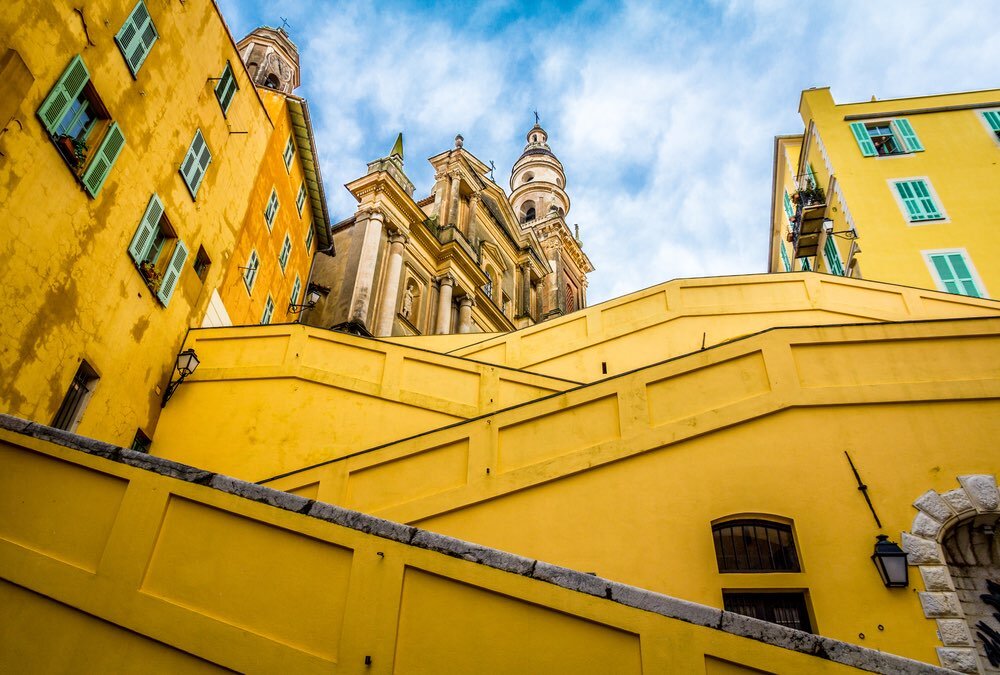

Short trip suggestion: Antibes Train 15 min
Welcome to Antibes, the charming Picasso town of the French Riviera! Located just a 10-minute train ride from Cannes, Antibes enjoys a mild climate year-round — warm in winter and pleasantly cool in summer. This beautiful coastal town is part of the famed Côte d’Azur, and many wealthy travelers choose to stay here to escape the bustle of nearby Cannes and Nice, finding tranquility in its refined seaside atmosphere.
One of Antibes’ highlights is the Picasso Museum (Musée Picasso), a must-visit for art lovers. While Picasso is often associated with Barcelona and Paris, Antibes also played a significant role in his artistic journey. In 1946, Picasso was invited to live and work in what was then Château Grimaldi, creating numerous ceramic works and paintings during his stay. One of his most famous masterpieces from this period, “La Joie de Vivre” (The Joy of Life), was painted right here.
The old town of Antibes is equally enchanting — its narrow cobblestone streets, lively markets, and pastel-colored houses capture the essence of southern France. Along the coast, you’ll often see artists sketching and painting the stunning Mediterranean scenery.
Interestingly, Antibes was once a Greek settlement, and traces of Roman ruins can still be found throughout the area, adding yet another layer of history to this beautiful seaside town.
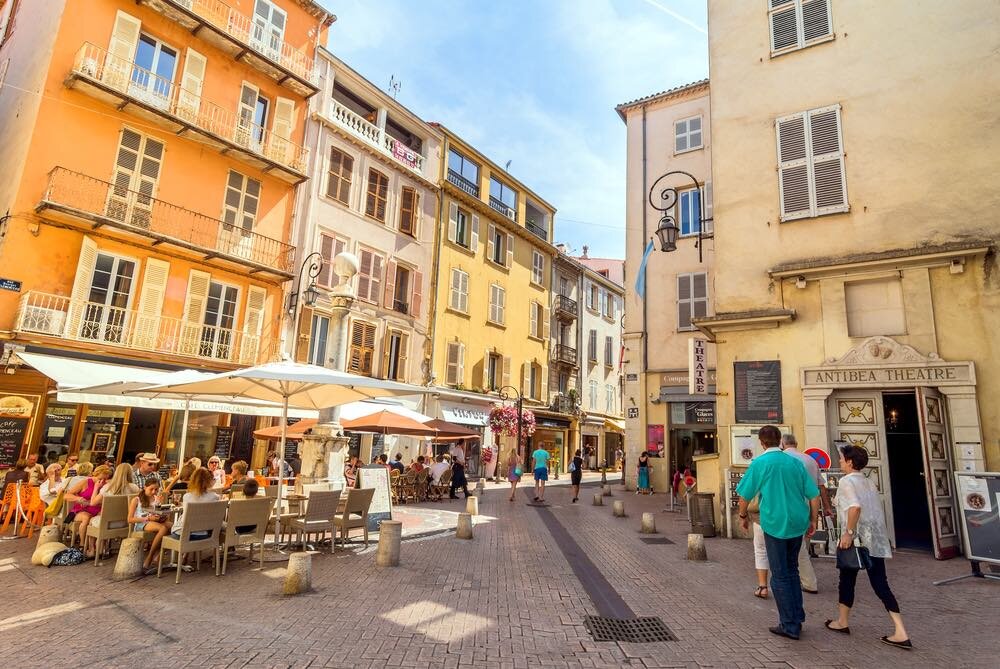

Short trip suggestion : Monaco Train 18 min
Welcome to the Principality of Monaco, a dazzlingly glamorous microstate covering just 475 acres, yet overflowing with luxury, charm, and excitement. This tiny sovereign nation captivates visitors with its elegance and energy — from the Prince’s Palace and the Old Town to the world-famous Oceanographic Museum and the legendary Monte-Carlo Casino, where you can even try your luck at the tables.
For a fun and unique experience, take the mini tourist train that follows the same route as the Formula 1 Grand Prix. The ride lasts about 30 minutes, circling Monaco’s main sights and offering spectacular views along the way.
When the Monaco Grand Prix takes place, the entire country transforms into a racetrack — roads close to regular traffic, and the roar of engines fills the air in one of the world’s most thrilling sporting events.
Monaco also carries a touch of Hollywood romance. Grace Kelly, the Oscar-winning actress, famously married Prince Rainier III, becoming Princess Grace of Monaco. Even today, the principality holds events to honor and remember its beloved princess.
As you gaze out over Monaco’s glittering harbor, you’ll see it packed with luxury yachts of every size — from sleek boats to massive superyachts. It’s said that half of them belong to casino visitors, while the rest are owned by Monaco’s wealthy residents — a fitting reflection of this tiny nation’s grand style and enduring allure.
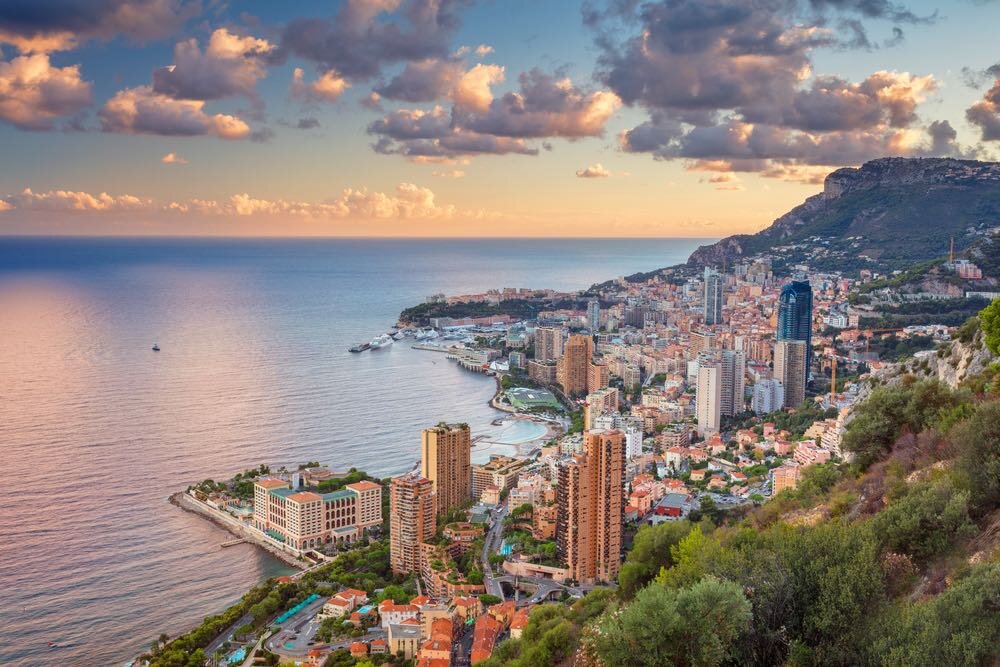

Short trip suggestion: Eze Train 1h
Perched high on a cliff more than 400 meters above the Mediterranean Sea, the medieval village of Èze (also known as the “Eagle’s Nest Village”) looks as if it has been plucked straight from a postcard. With its stone-built houses, narrow winding lanes, and breathtaking sea views, Èze has rightfully earned its title as “one of the most beautiful villages in France.”
This enchanting hilltop town boasts over 2,000 years of history, filled with legends and stories that echo through its cobbled streets. As you wander through the village, every corner reveals a new charm — art galleries tucked behind stone arches, perfumeries filling the air with Provençal scents, and stairways leading to stunning viewpoints.
At the very top of the village lies the Jardin Exotique d’Èze (Exotic Garden), home to a fascinating collection of cacti and succulents from around the world. From here, visitors can enjoy one of the most spectacular panoramic views of the French Riviera — the glittering coastline stretching endlessly beneath the azure sky. Admission is €6, and the view alone is worth every cent.
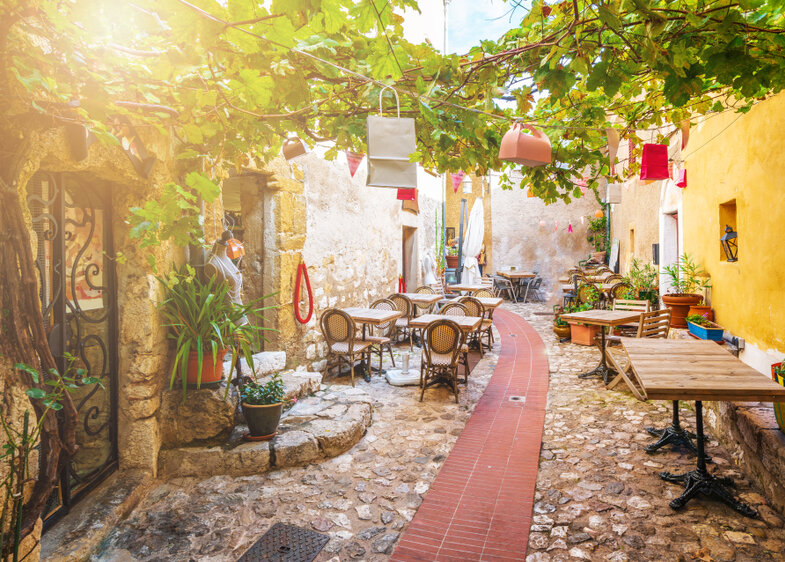
Day 5–6 | Nice – Train – Paris / Overnight in Paris (2 nights)
Louvre Museum, Notre Dame Cathedral, Arc de Triomphe, La Grande Arche, Eiffel Tower, Musée d’Orsay, Seine River, Champs-Élysées, and the Palace of Versailles — Paris is truly a dream city for travelers, filled with countless magnificent landmarks and timeless charm.
The included accommodation, Hotel Off Seine Paris, is the first floating hotel in Paris, located right on the Seine River. This stylish and contemporary hotel offers a one-of-a-kind experience that blends modern design with the serene beauty of the river. Guests can enjoy its terrace and small pool overlooking the Seine, as well as a chic bar and restaurant serving cocktails and light dishes — all within an atmosphere rich in contemporary art and sophistication.
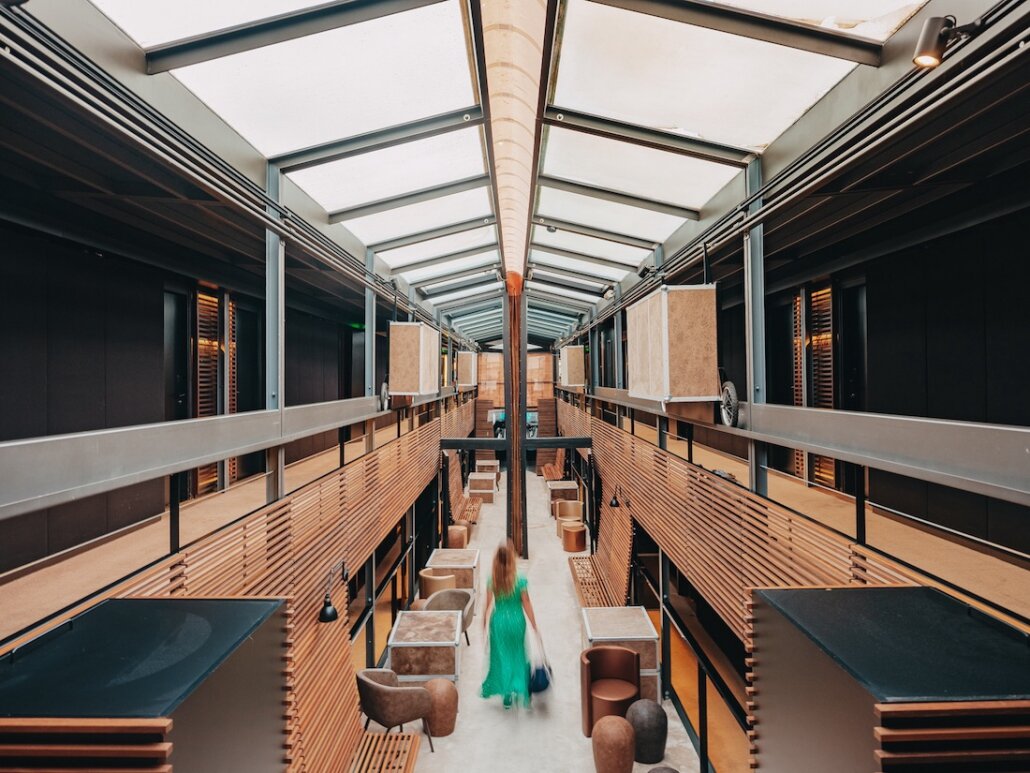

Short trip suggestion: Giverny Jardins de Monet Train 1 hr
Giverny – The Sanctuary of Impressionism
Located in Normandy on France’s western coast, Giverny is a quintessential rural village surrounded by tranquil hills and picturesque scenery. This charming place became world-famous as the home of Claude Monet, who spent his later years here and created his iconic series of water lily and garden paintings. Through Monet’s masterpieces, the world came to know the poetic beauty of Giverny — a destination that continues to attract Impressionist art lovers from all over the globe.
To reach Giverny from Paris, take a train to Vernon, then transfer to a local bus to the village.
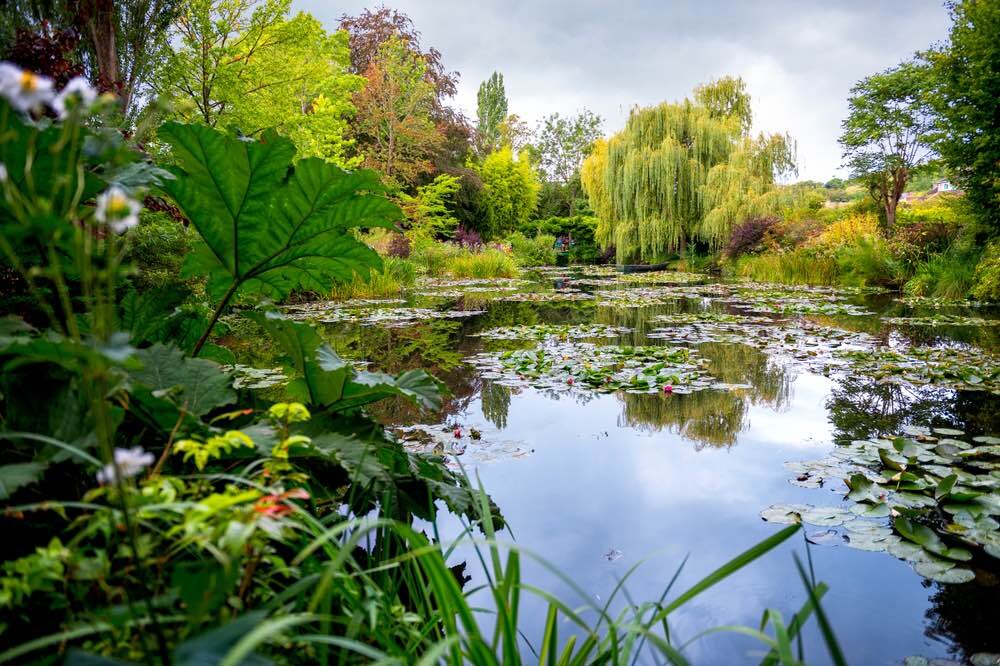

Short trip suggestion: Auvers Sur Oise Train 1h
By simply taking a train, you can reach a suburb of Paris where Van Gogh spent the final 70 days of his life. It was here that he created masterpieces such as Wheatfield with Crows, Portrait of Dr. Gachet, and The Church at Auvers. After stepping off the train, visitors can follow the signs to find the very streets, churches, and fields that inspired these paintings. At Château d’Auvers, Van Gogh’s life is brought to life through films, reconstructed living quarters, and the places where he dined, guiding visitors back to the era in which the Impressionist master lived and created.
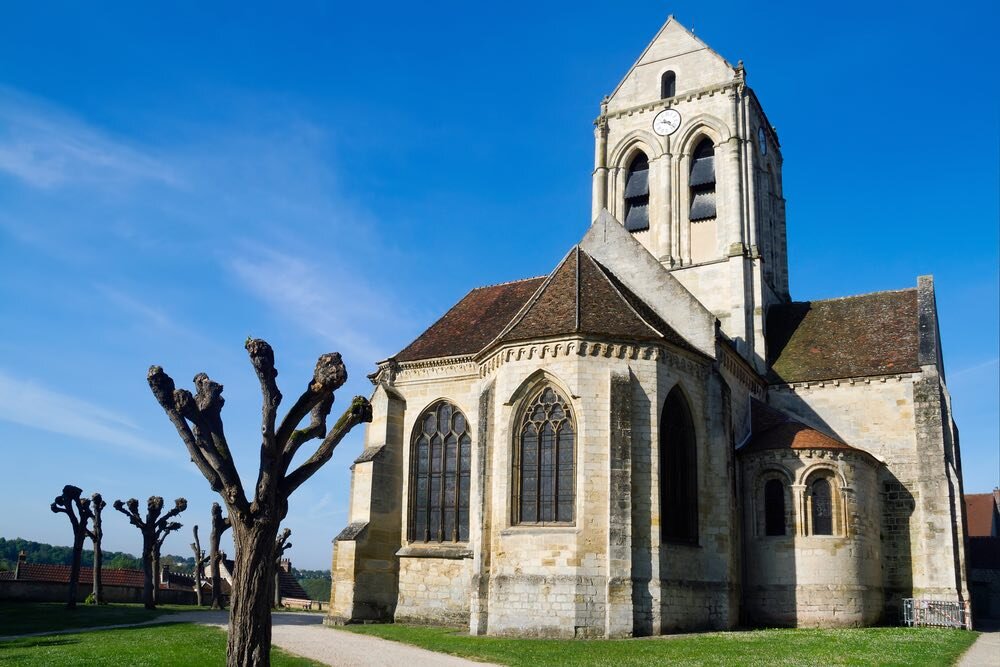
[Recommended Add-on] Mont Saint-Michel Day Tour
Spend a full day exploring one of France’s most iconic destinations — the fairy-tale island of Mont Saint-Michel, located along the coast of Normandy. From Paris, embark on a journey to witness one of Europe’s true wonders: the magnificent Benedictine Abbey perched atop the rocky mount. During your free time, wander around this UNESCO World Heritage Site, stroll along the tidal causeway that is dramatically submerged during high tide, and take in the breathtaking views of the surrounding bay.
In the guided tour of the Abbey, you’ll discover its pivotal role as a major cultural and pilgrimage center of the Middle Ages. Admire the Gothic architecture that has withstood centuries of restoration, the elegant cloisters, and the monks’ grand refectory that reflect its enduring spiritual heritage.
Stroll leisurely through the island’s narrow medieval streets, explore the charming shops and museums, or walk along the ramparts encircling the Abbey. As the tide rises, watch the sea transform Mont Saint-Michel into an isolated island — a spectacular and unforgettable sight that captures the magic of Normandy.
